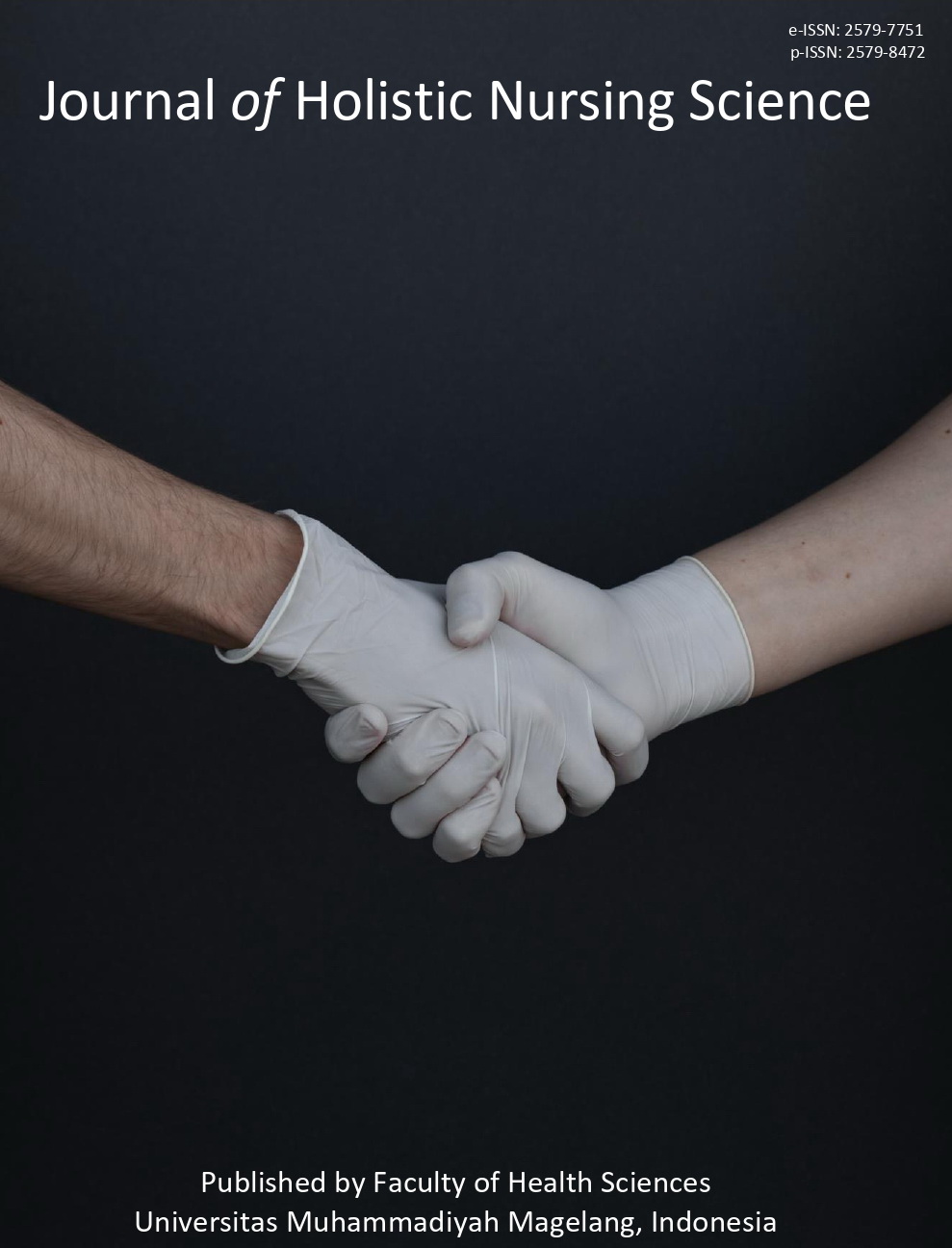EFEKTIVITAS AROMATERAPI LAVENDER DAN AROMATERAPI LEMON TERHADAP INTENSITAS NYERI POST SECTIO CAESAREA (SC) DI RUMAH SAKIT BUDI RAHAYU KOTA MAGELANG
Main Article Content
Abstract
Latar belakang: Nyeri merupakan suatu keadaan yang tidak nyaman yang sering dirasakan oleh pasien post sectio caesarea. Aromaterapi dapat digunakan untuk mengatasi nyeri post sectio caesarea. Tujuan:Penelitian ini bertujuan untuk mengetahui efektivitas antara aromaterapi lavender dan aromaterapi lemon di Rumah Sakit Budi Rahayu Kota Magelang. Metode:penelitian ini menggunakan metodequasy experimentdengan rencangan two group pre-test and post-test designdengan sampel 56 responden, 28 responden kelompok aromaterapi lavender dan 28 responden kelompok aromaterapi lemon. Teknik pengambilan sampel menggunakan consecutive samplingInstrumen yang digunakan adalah numeric rating scale (NRS). Data diolah dengan uji Wilcoxon dan uji Mann Whitney.Hasil: hasil penelitian ini menunjukkan bahwa aromaterapi lavender dan aromaterapi lemon efektif dalam menurunkan skala nyeri post sectio caesarea dengan p value 0,009 (p < 0,05). Kesimpulan: Aromaterapi levender dan aromaterapi lemon efektif dalam menurunkan skala nyeri post sectio caesarea,tetapi aromaterapi lemon lebih efektif dalam mengatasi nyeri post sectio caesarea dengan nilai rata-rata sebesar 4 lebih besar dibandingkan rata-rata aromaterapi lavender yaitu 2,15.Saran: Rekomendasi penelitian ini adalah supaya menggunakan aromaterapi lavender dan aromaterapi lemon sebagai intervensi alternatif yang digunakan untuk menurunkan nyeri post sectio caesarea.
Downloads
Article Details
Authors who publish their articles in JHNS retain full copyright of their work. JHNS does not require authors to transfer their copyright to the journal or Universitas Muhammadiyah Magelang as the publisher. The authors grant JHNS a license for the first publication.
